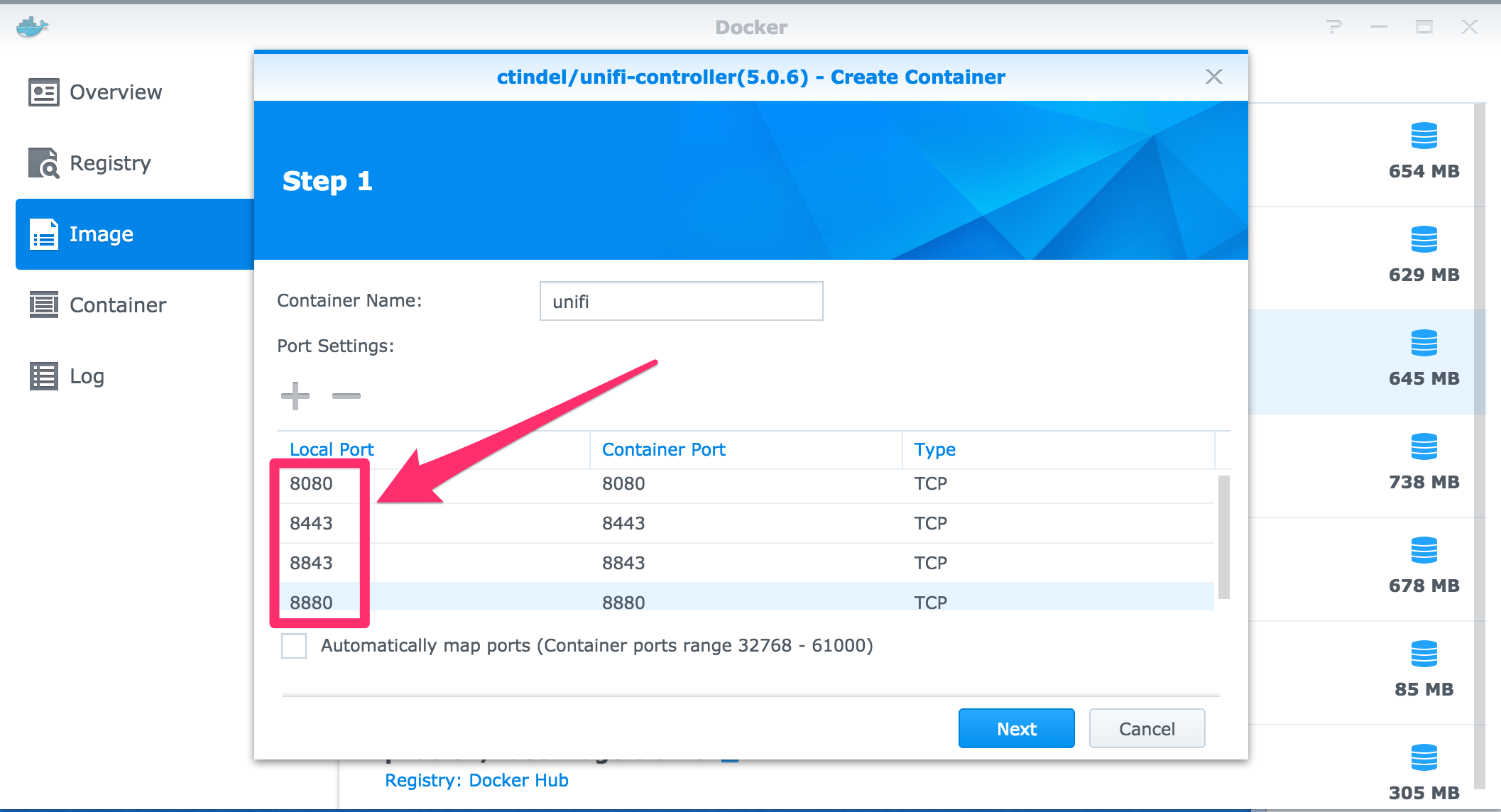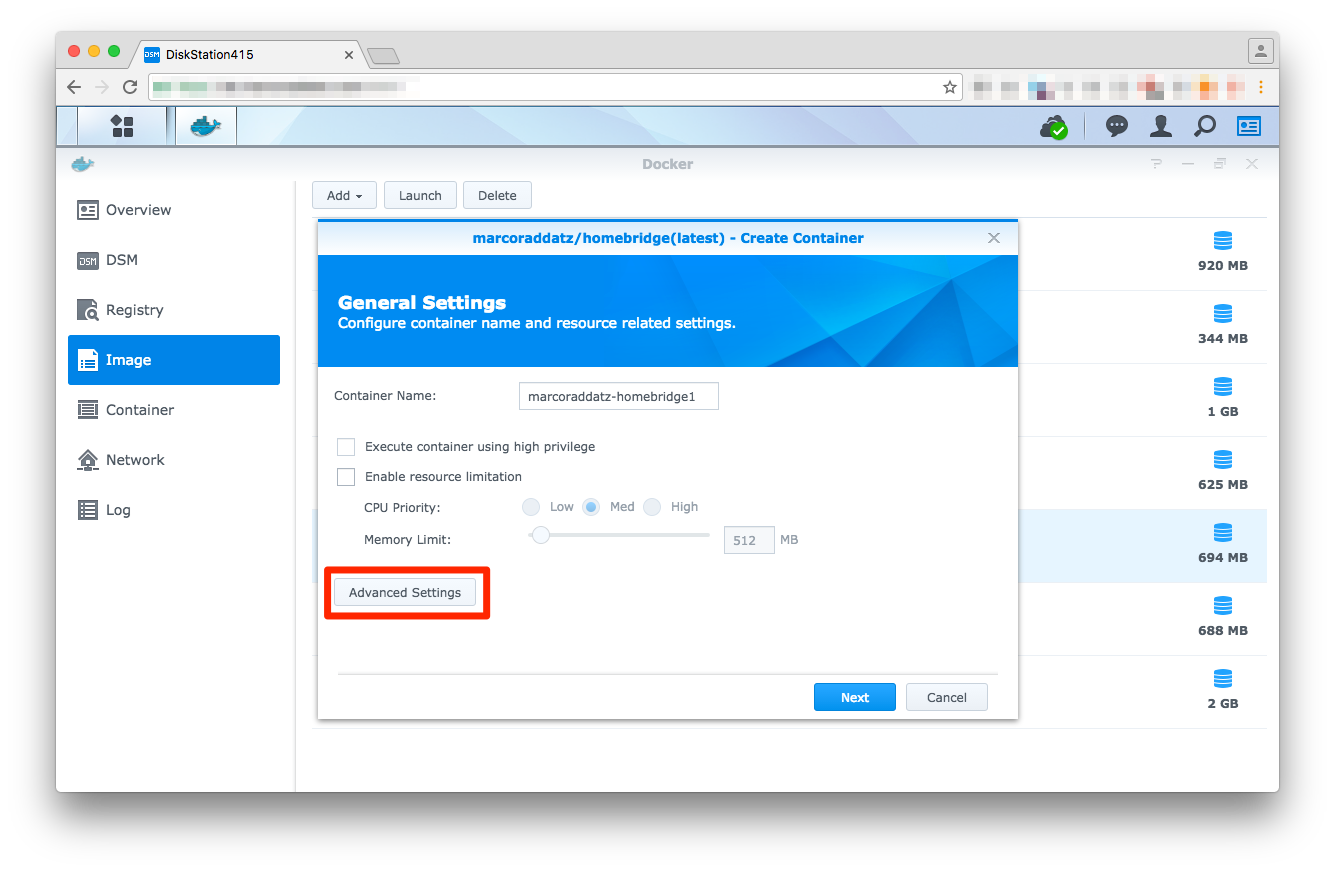Synology has limited Docker availability in the package manager to only some select models (models and links updated ) 21 series:DS1821+, DS1621xs+, DS1621+, DVA3221 20 series:FS6400, FS3.
The benefits of running the Ubiquiti UniFi controller in Docker on the Synology NAS is that it’s free (if you already own the Synology NAS) and super simple to setup. Depending on your Synology specs, such as a Synology DS1815+, you could easily manage several access points and sites using the docker UniFi controller and upgrading to 16GB. Docker BitWarden - self hosted password manager using bitwardenrs/server image: Docker Firefly III - self-hosted manager for your personal finances: Docker Install nginx-proxy-manager: App Synology DS Manager – Download Station macOS app and Safari Extension 2020 NEW.

My long love of Synology products is well-documented. I checked my Amazon history, and I bought my Synology DS1511+ NAS in May of 2011! I have blogged about the joy of having a home server over these last nearly 10 years in a number of posts.
- I setup a home backup strategy without the cloud
- I later added CrashPlan Cloud Backup and still use it.
- A few years back I set up VPN on my Synology as well an internal Git Server and a Minecraft Server for the kids
- I also setup Plex for home movie storage
- You can also run Docker images with things like Pi-Hole ad blocking
It's great to have a home server - it's a little slice of the cloud, in your home. I like home servers because while I trust the cloud, I trust a computer I can touch about 1% more than someone else's computer.
NOTE: When I review gadgets and products, I often use Amazon Affiliate Links. I donate the small amount I make from you using these links, Dear Reader, to my kids' charter school. Thanks for using and clicking these links to support!
Anyway, my Synology DS1511+ is about ten years old and it's working great but I am using it more and more and throwing more and more at it. It did have some challenges running a Minecraft Server recently, on top of all its other responsibilities.
I use Seagate 2TB disks and I run 4 of them in the 5 bay device, with a fifth drive as a hot spare. If a drive goes bad - which happens about every 2 to 3 years - the Synology will rebuild with the spare, then I pull the dead drive. I have two additional 2TB unopened Seagate Drives ready to go, so when this happens it's as close to a non-event as possible.
I have every digital photo and digital video and family document we've created since 1998. I've also got local backups of my Gmail from hanselman.com which goes back to before Gmail started when I was running my own POP3 mail server. It's all easily less than 5TB. Remember also that Google Takeout can get you Zips of all your data! Back. It. All. Up!

Fast forward to today and Synology came out with the Synology 5 Bay NAS DiskStation DS1520+. It's basically a ten year's newer clone of my 1511+ workhorse, updated and refreshed! It's WAY faster. It was immediately noticeable on startup. File access is faster, indexing is faster, my Docker images start faster.
Now, a little more money would get you a 6 bay NAS and just $150 will get you a 2 bay, but I love the size and power of a 5 bay for our home and my office. Four disks are for my array and 1 is that hot swap drive. I think that for small businesses or home offices five bays is the perfect size and price - about $600-700 USD.
The Synology 1520+ has 4 GbE network ports (which is nice with Link Aggregation in a busy house), supports two eSATA externals (I use one to backup the backup to a single disk, as I believe in the Backup Rule of Three and you should, too!) and works with any SATA drives, 2.5' or 3.5'. One of the big reasons that attracted me to this update is that there's slots for 2 x M.2 2280 NVMe SSDs for caching. I put a 512G M.2 drive in there to accelerate file system access.
If you want, you can have up to 15 drives using two DX517 drive expanders up to 240TB, but with just 4 slots and large drives like Seagate Ironwolf drives in the 10TB to 18TB range, storage is really a non-issue. I use Seagate 2TB drives because they're plentiful and like $50. We treat it like a massive infinite local disk in the house that everyone can talk to. We named it SERVER, so it's just SERVsynoER for everyone.
The Synology OS software is deep and broad and runs entirely in your browser. You'll figure it out very quickly as it's all windows and wizards. I am a fan of the Cloud Sync feature that I use to backup my Google Drive, Dropbox, and One Drive. Again, this is a level of paranoia, but damned if I'm gonna get locked out of my own data.
The Synology HyperBackup goes in any direction using whatever cloud and whatever tools you are familiar with. You want Rsync? Cool. Want to backup to Azure or AWS? Cool.
I was concerned that migrating would be hard or involved basically starting over from scratch, but since I was moving between two models in the same family (I was moving from a 1511+ to a 1520+, even 10 years later) It was literally just move the drives in order and boot up. Took 10 minutes. For movement between device families or to new drives there's at least three good options.
It was actually scarily simple, given there's ten years of history here. I moved the drives (maintaining order) and booted up the new 1520+ and was greeted with this screen:
I clicked Migrate twice and was all set.
If you are migrating and upgrading, I'd be sure to read the section on HDD Migration and look closely at the table, considering your Source and Destination NAS models.
So far this new Synology is WAY snappier, runs Docker faster, can run Virtual Machines now (although in 8 gigs, only small utility ones), and the SSD cache has made browsing family photos whip fast. All in all, it feels like a 10 year refresh BUT it's the same size.
My home NAS is sitting quietly on a shelf in my office. The kids and spouse are having their PCs backed up in the background, family photos and DVD backups are all available easily (and there are Synology iPhone apps as well to view the files).
Synology devices specifically - and home NAS devices generally - are a great addition to techie homes. There's a bunch of 1st and 3rd party packages you can run on it to make it as much or little a part of your Home IT setup as you like. It can run DHCP and DNS, iTunes Servers, Mail, Chat Servers, or even their own web-based Office clients. Take a look at the Synology 1520+ if you're in the market for a home or business NAS. I'm looking forward to another 10 years with this NAS.
Sponsor: Suffering from a lack of clarity around software bugs? Give your customers the experience they deserve and expect with error monitoring from Raygun.com. Installs in minutes, try it today!
Docker On Synology Ds218j
About Scott

Scott Hanselman is a former professor, former Chief Architect in finance, now speaker, consultant, father, diabetic, and Microsoft employee. He is a failed stand-up comic, a cornrower, and a book author.

Docker On Synology
Docker On Synology Ds418
AboutNewsletter